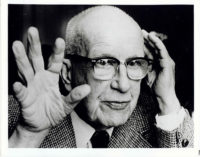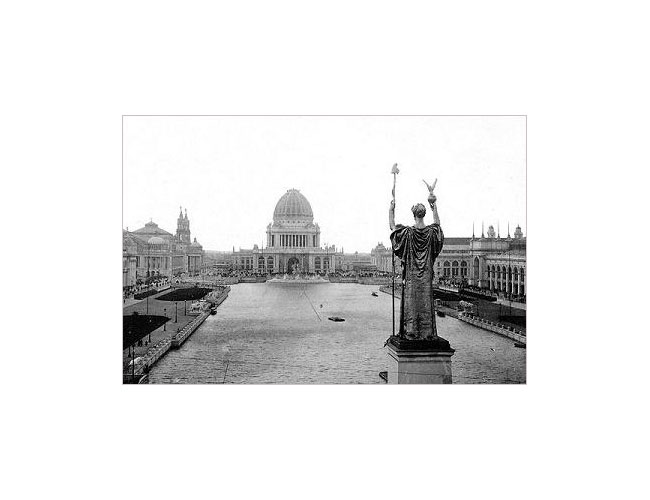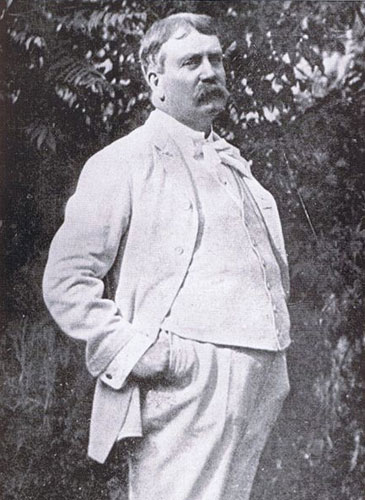"City Beautiful" Comes Alive in Daniel Burnham Documentary

Make No Little Plans
Daniel Burnham
The film Make No Little Plans: Daniel Burnham and the American City, which airs on September 6, recounts the life of Chicago architect Daniel Burnham (1846-1912). Burnham is famous for designing the Flatiron Building in New York, Union Station in Washington, D.C., and the 1909 master plan for Chicago. In addition to pioneering the skyscraper form, he introduced the City Beautiful movement to cities across the U.S. and the Philippine Islands.
Photo courtesy Wikipedia

Make No Little Plans
Daniel Burnham
Union Station (1908) in Washington, D.C.
Photo courtesy Wikipedia

Make No Little Plans
Daniel Burnham
Union Station (1908) in Washington, D.C.
Photo courtesy Wikipedia

Make No Little Plans
Daniel Burnham
Flatiron Building (1902) in New York.
Photo courtesy Wikipedia

Make No Little Plans
Daniel Burnham
Masonic Temple Building (1892) in Chicago, by Burnham and Root. Demolished in 1939.
Photo courtesy Wikipedia

Make No Little Plans
Daniel Burnham
Court of Honor and Grand Basin at the 1893 Chicago World's Fair. The expo was largely designed by Burnham and Frederick Law Olmstead.
Photo courtesy Wikipedia

Make No Little Plans
Daniel Burnham
1909 Plan for Chicago.
Photo courtesy Wikipedia

Make No Little Plans
Daniel Burnham
1906 Plan for San Francisco, by Burnham and William Bennett.
Photo courtesy Wikipedia

Make No Little Plans
Daniel Burnham
1905 Plan for Manila.
Photo courtesy Wikipedia

Make No Little Plans
Daniel Burnham
Through drawings, archival photos, contemporary footage, and a fly-through animation of the 1893 World Fair, the new documentary examines Burnham's architectural achievements. But his legacy extends beyond the built environment. He identified with the Progressive movement, and the film emphasizes some of the social programs he suggested in an early draft of the Chicago plan. He also gave freely of his time and wealth.
Photo courtesy Wikipedia










The film Make No Little Plans: Daniel Burnham and the American City, which airs on PBS on September 6, recounts the life of Chicago architect Daniel Burnham (1846-1912).
The film, which premieres nationally on PBS on Labor Day, September 6 (check local listings for times), recounts the life of Chicago architect Daniel Burnham (1846-1912), famous for designing the Flatiron Building in New York, Union Station in Washington, D.C., and the landmark 1909 master plan for Chicago. He pioneered the skyscraper form, then introduced the City Beautiful to cities across the United States and the Philippine Islands; along the way, he practically invented not only the large, corporate architecture firm, but also the very discipline of urban planning.
Judith Paine McBrien, the writer, director, and producer of the documentary, has developed several films about Chicago, and she found that Burnham kept coming up in each one. “A lot of people in Chicago know the name,” she said, “but you get outside the Midwest and people aren’t as familiar with what he’s done.” With the Plan of Chicago's centennial occurring in 2009, the time was ripe to revisit his work. In fact, the film was shown last September in Chicago’s Millennium Park, along the lakefront that Burnham was instrumental in preserving.
With drawings, archival photos, contemporary footage, and a fly-through animation of the “White City” at the 1893 World’s Columbian Exposition, the documentary examines Burnham’s architectural achievements. But his legacy extends beyond the built environment. He identified with the Progressive movement, and the film emphasizes some of the social programs he suggested in an early draft of the Chicago plan. He also gave freely of his time and wealth. “There are a lot of architects and planners who have looked beyond their own offices,” says Thomas S. Hines, a UCLA professor of history and architecture and Burnham’s biographer. “But no one to my mind has yet come up to Burnham’s generosity as a philanthropist and a leader of causes, and as a founder of institutions,” such as the American Academy in Rome.
“Burnham was interested in the city not only as a physical artifact,” says Howard Decker, FAIA, a planner and project director with Ehrenkrantz Eckstut & Kuhn Architects, “but as a social and cultural artifact.” Decker, who appears on-camera, notes that Burnham addressed many of the challenges that face architects and planners today: population growth, sprawl, environmental degradation. “It’s another reason to go back and look at the city Burnham was interested in—it’s the city before the Modern city. Maybe it’s an appropriate model to undo some of the damage we’ve done.”
Editor¹s Note: This story was updated to reflect the correct spelling of the first name of Professor Hines.













